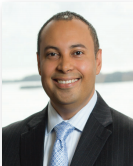By Onier Llopiz, Esquire & Shaun Robert Koby, Esquire – Lydecker / Diaz
Most sports fans have been guilty of judging the actions of players and coaches after-the-fact and concluding that another course of action would have been “more reasonable” to reach the desired result. How many still question the Seahawks throwing the ball with less than a minute left in Super Bowl XLIX instead of handing the ball off to Marshawn Lynch for the “easy” touchdown?
While many of us may routinely second-guess decisions in the sports world, the environment certainly changes when guns and bullets are involved. Police officers have the responsibility to keep our citizenry safe and protected, but a wrong decision could result in the deaths of officers and/or civilians. Police officers put their lives on the line on a daily basis and one should tread carefully when second-guessing their split-second decisions while under high-intensity stressful events. Law enforcement officers are often protected from liability under the doctrine of qualified immunity. Qualified immunity “shields public officials from damages for civil liability so long as they did not violate an individual’s ‘clearly established’ statutory or constitutional rights.”1 Recently, the United States Supreme Court in White v. Pauly held that qualified immunity protects police officers from civil liability absent a violation of clearly established law and warned of the error of defining the clearly established law at too high a level of generality. 2 The Court, in essence, reversed the trend of lower courts converting “the rule of qualified immunity…into a rule of virtually unqualified liability simply by alleging violation of extremely abstract rights.” 3
White v. Pauly
Earlier this year, in White v. Pauly, the United States Supreme Court addressed whether or not qualified immunity applied to a police officer who arrived late to a scene and shot and killed an armed occupant of a house, after hearing gunshots, without first issuing a warning. According to the record, Officer White was radioed by two other police officers (Officers Mariscal and Truesdale) who had surrounded a house with two armed occupants (Daniel and Samuel Pauly). Upon Officer White’s arrival, he heard the statement “We have guns” and proceeded to pull out his gun and “took cover behind a stone wall 50 feet from the front of the house.” A few seconds after he heard that Daniel and Samuel Pauly had guns, Daniel Pauly stepped out of the back door and fired two shotgun blasts. A few seconds after the shotgun blasts, Samuel Pauly opened the front window and pointed a gun toward Officer White. Approximately “four to five seconds” after the Samuel Pauly pointed a gun outside the front window; Officer White shot and killed him. Samuel Pauly’s estate and Daniel Pauly filed suit against Officers Mariscal, Truesdale, and White. One of the claims was that the officers were liable under 42 U.S.C. Section 1983 for using excessive force. The District Court denied qualified immunity for all three officers and a divided panel of the Court of Appeals for the Tenth Circuit affirmed.4
The critical issue before the United States Supreme Court was whether Officer White, having responded to the scene after Officers Mariscal and Truesdale, violated clearly established law by not issuing a warning to Samuel and Daniel Pauly prior to using deadly force against Samuel Pauly. The Court reiterated that “qualified immunity attaches when an official’s conduct does not violate clearly established statutory or constitutional rights of which a reasonable person would have known” and “immunity protects all but the plainly incompetent or those who knowingly violate the law.” 5 The Court recognized that there does not need to be a case directly on point for a right to be clearly established but “existing precedent must have placed the statutory or constitutional question beyond debate.”6
The United States Supreme Court also focused on the principle that “clearly established law should not be defined at a high level of generality” and “must be particularized to the facts of the case.” 7 The United States Supreme Court vacated the judgment and held that Officer White “did not violate clearly established law on the record described by the Court of Appeals panel.”8
Practical Significance
The holding in White v. Pauly recognizes that police officers are required to make split-second decisions and unless it was beyond debate that there is a violation of a “clearly established” right, then qualified immunity applies. 9 Attorneys representing officers will undoubtedly cite this case while moving for summary judgment in an effort to dismiss lawsuits against their clients. The Supreme Court also noted that the Court of Appeals for the Tenth Circuit recognized that this case presented a “unique set of facts and circumstances” based upon Officer White’s late arrival and this alone should have been an indication that Officer White did not violate a “clearly established right.”10 Accordingly, cases involving unique circumstances may be more likely to fall outside of the “beyond debate” standard.
The United States Supreme Court has made clear that the violation of a “clearly established right” cannot be highly generalized and needs to be specific and particularized to the facts of the case. 11 If the lower courts properly apply this analysis, the amount of cases dismissed based upon qualified immunity should naturally increase. The White case is clearly the “law of the land” and appears to have reversed the growing liberal trend of lower courts granting exceptions to qualified immunity and allowing cases to move forward. Indeed, the United States Supreme Court even mentioned in the White opinion the fact that it has reversed a number of federal court rulings in the last five years on qualified immunity. 12
If not doing so already, defense counsel representing officers need to incorporate this case in their dispositive motions. The White case also offers significant leverage in any settlement negotiations and should be used as a powerful sword during any court mandated mediations.

Future Implications
Will the White holding offer greater protection to our officers and reduce the amount of exceptions to the application of qualified immunity? Will the lower courts apply a strict “clearly established” analysis and allow qualified immunity to protect “all but the plainly incompetent or those who knowingly violate the law”? Unfortunately, it is too early to tell.
Since the holding in White v. Pauly in January 2017 there have been several decisions that have been apparently distinguishable from White and did not offer qualified immunity to the subject police officer. For example, the Ninth Circuit Court of Appeals, a historically more liberal Circuit than the Eleventh Circuit, recently decided Longoria v. Pinal County in October 2017.13 In Longoria, Officer Heath Ranken shot and killed Manuel Longoria after Longoria fled police in an automobile chase for over 70 minutes. Longoria exhibited erratic behavior during the chase, including “waiving his hands out of the car and making a gun with his fingers and pointing his fingers at his head.” 14 Officer Ranken did not witness the police disable Longoria’s vehicle, but heard the crash. Officer Ranken was running to the scene of the crash while Longoria exited his vehicle and Longoria faced other police officers with one hand behind his back. Longoria initially did not comply with the commands to show his hands and eight other police officers surrounded Longoria with their guns drawn. Longoria was shot with beanbag rounds and one officer deployed a taser. Longoria “flinched and moved erratically.” As Longoria turned “halfway around” to face his car and with his back to the officers, Officer Ranken shot and killed him. 15
Longoria’s estate sued Officer Rankin under Section 1983. The District Court held that Officer Rankin was entitled to qualified immunity and granted Summary Judgment in his favor. 16 The Ninth Circuit Court of Appeals reversed and held that a jury question existed as to whether Officer Rankin was reasonable to use deadly force against Longoria who was unarmed, surrounded by police officers, and after the police chase had ended. 17
Hopefully, the Ninth Circuit’s Longoria decision will be an exception to the rule. It will be interesting to witness the progeny of cases post-White in the coming year. Whether the United States Supreme Court was successful in reversing the trend of granting exceptions to qualified immunity is too early to know. However, the White case certainly gave a boost to the doctrine of qualified immunity for lower courts and hopefully will serve as a “game changer” in future decisions!

Onier Liopiz is a shareholder of Lydecker Diaz, a national AV-rated law firm with offices throughout Florida, and in New York and New Jersey. Lydecker Diaz specializes in the representation of government agencies, including municipalities, counties, school districts, charter schools, law enforcement personnel, public officials, and state agencies. Onier chairs the firm’s Public Entity Practice Group and the Professional Liability Group at the firm. He graduated cum laude from the University of Miami School of Law, which he attended on a full-tuition scholarship, served on the International & Comparative Law Review, and also attended Miami for his undergraduate degree, triple-majoring in Economics, Psychology, and Political Science.

Shaun Robert Koby is a shareholder of Lydecker Diaz, a national AV-rated law firm with offices throughout Florida, and in New York, New Jersey, and Pennsylvania. Lydecker Diaz specializes in the representation of government agencies, including municipalities, counties, school districts, charter schools, law enforcement personnel, public officials, and state agencies. Shaun manages the firm’s Tampa office and assists in the management of the Orlando office. Shaun graduated first in his class out of over 9000 students at Florida State University with a double major in Political Science and Criminology. Shaun graduated with honors from the University of Florida Levin College of Law and he was a teaching assistant for Legal Research and Writing, Appellate Advocacy, and Trial Practice.
*
1 Harlow v. Fitzgerald, 457 U.S. 800, 818 (1982).
2 White v. Pauly, 137 S.Ct. 548, 551 (2017).
3 Id. at 552 (quoting Anderson v. Creighton, 483 U.S. 635, 639 (1987)).
4 Id. at 550.
5 Id. at 551.
6 Ibid (emphasis added).
7 Id. at 552 (quoting Anderson, 483 at 640).
8 Id. at 552.
9 Id. at 551.
10 Id. at 552.
11 Id. at 552 (quoting Anderson, 483 at 640).
12 Id. at 551.
13 Longoria v. Pinal County, 873 F.3d 699 (9th Cir. 2017).
14 Id. at 703.
15 Ibid.
16 Id. at 702.
17 Id. at 711.
